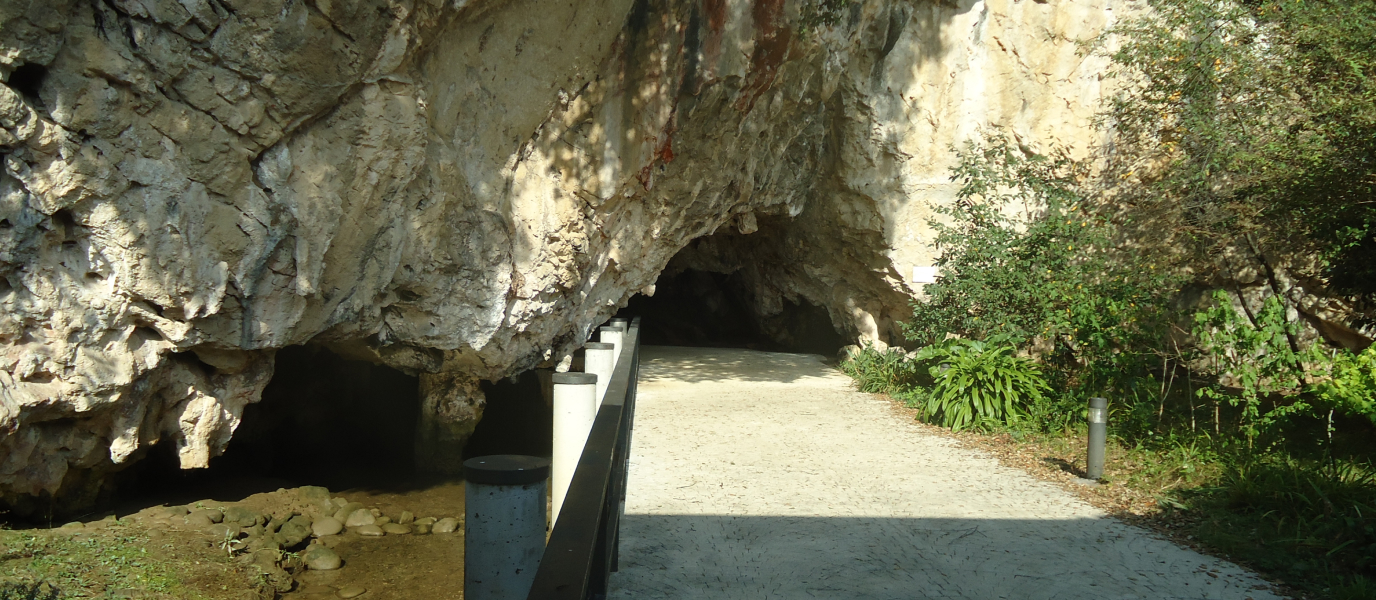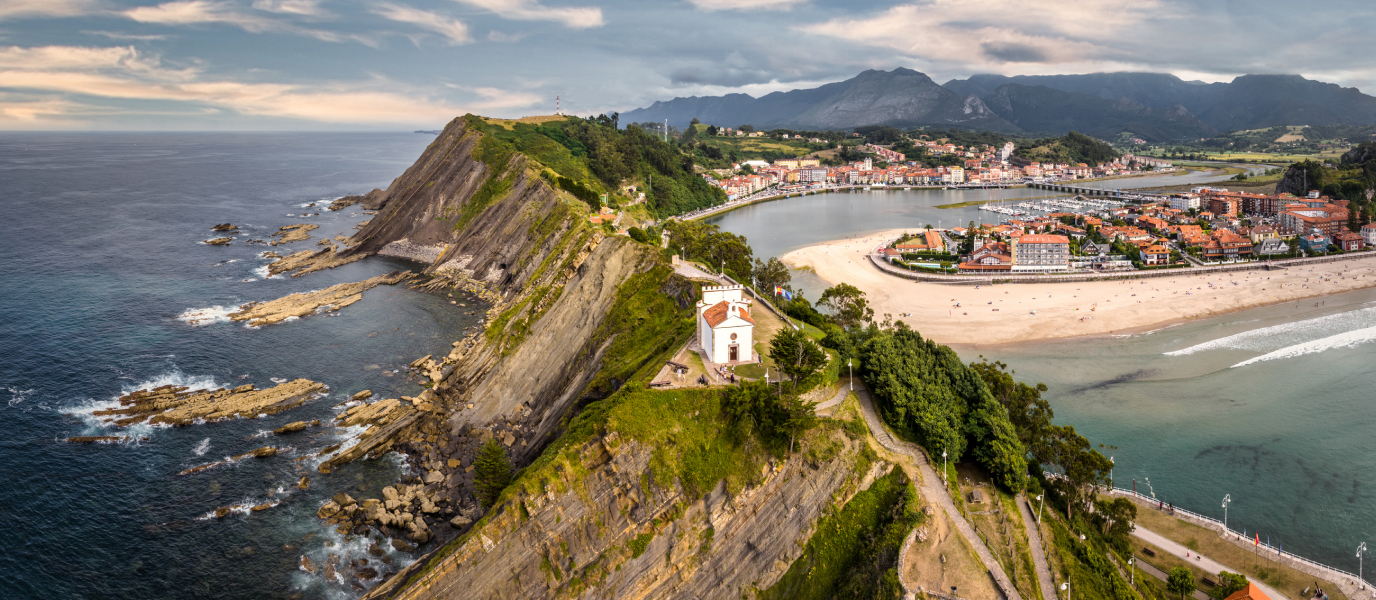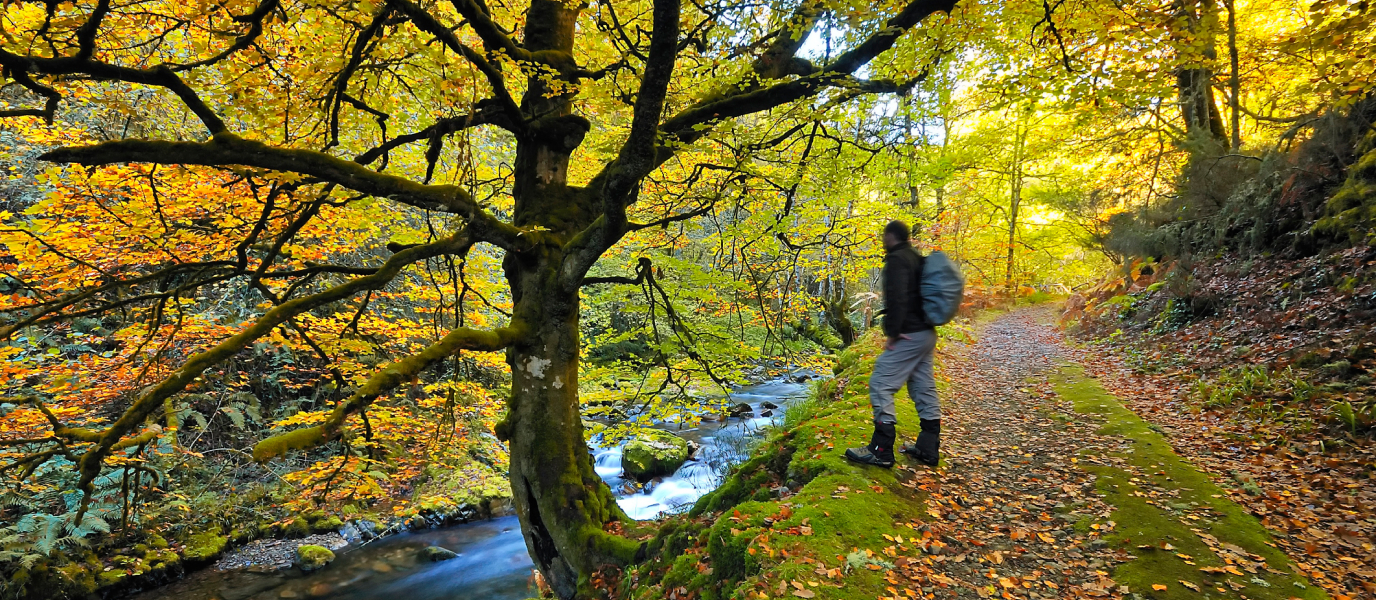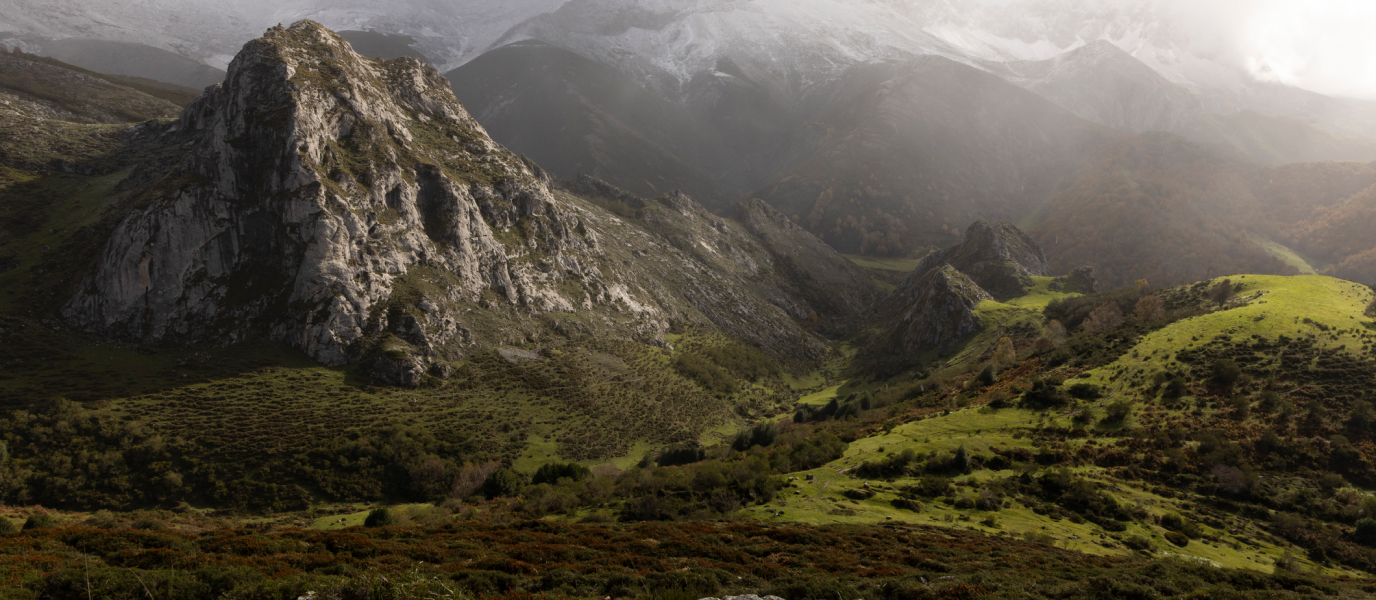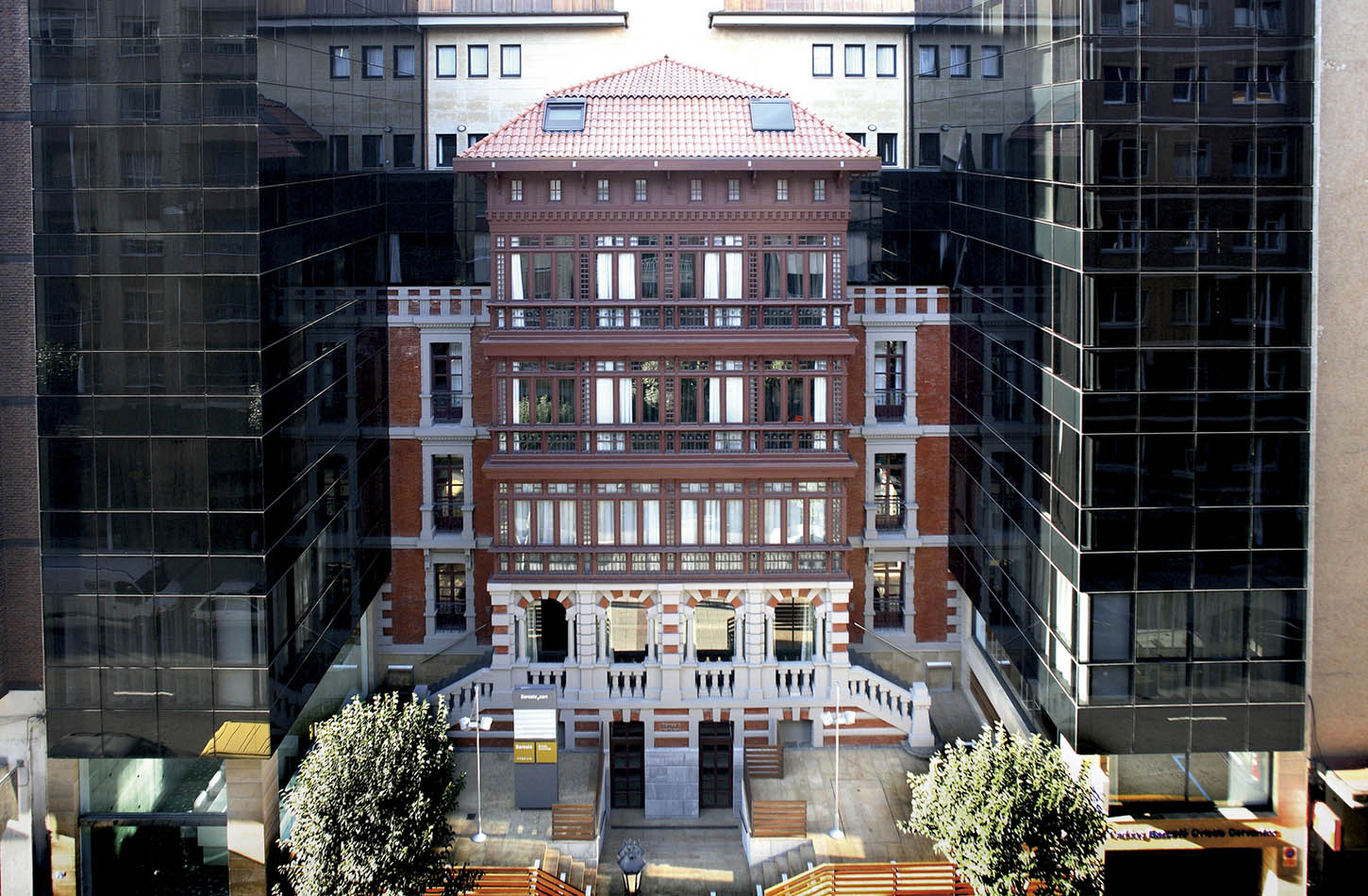Asturias is one of the most important sites of prehistoric cave art in Europe. Fossils indicate humans settled along the Cantabrian coast some 100,000 years ago, drawn to what is present-day Ribadesella for the fertile land and abundant freshwater deposits. However, humans only achieved a more evolved way of living during the Stone Age, in 40,000 BC, when the first manifestations of art seem have taken place.
The first excavations of local caves began in 1912, but Tito Bustillo Cave was not discovered until 1968.
Tito Bustillo Cave: Ribadesella’s hidden prehistoric treasure
Tito Bustillo Cave houses paintings and engravings from between 33,000 BC and 10,000 BC and is one of the most impressive archaeological sites in the world. The quality of the paintings and the archaeological value of the cave have earned it a place among other renowned prehistoric gems, such as Altamira and Lascaux.
The paintings were discovered by the Torreblanca Speleological Society while they were inspecting the cavern. They accessed the cave by rappelling down a crevasse and exploring 700 metres of tunnels, chambers and geological formations. There is no need to pack your rappelling gear, today, however, as there is a tunnel leading to the main chamber from the end of the cave. It was built in 1970 to make access easier.
Based on the artefacts found in the cave, archaeologists concluded that the cave had been inhabited for an extensive period of time by humans. Paintings in the Gallery of Anthropomorphic Figures date back to 33,000 BC, while the chamber housing the Great Panel mural has arrowheads and harpoons from between 7,000 BC and 15,000 BC. Another astonishing find includes quartzite, flint, scrapers, bone-adorned objects and a carved staghorn of a goat skull. These objects were discovered in the original cave entrance that had been sealed for thousands of years following the collapse of rock ceiling.
The skill and technique used in the representations evolved over time, with several superimpositions. There are a total of 11 sets of paintings and engravings that can be divided into two groups; the first shows the use of a red pigment to depict symbols, while the second is centred around the representation of animals.
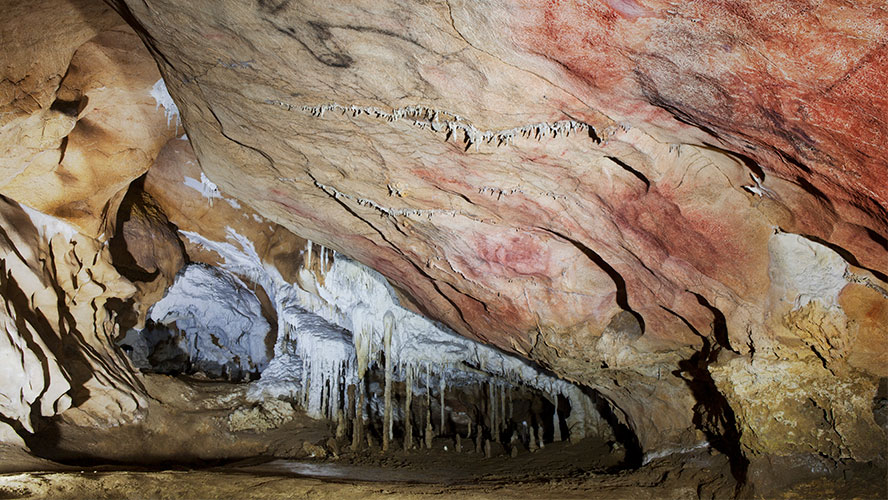
Visiting Tito Bustillo Cave
A stone footbridge leads to the entrance of the cave. Once inside, a path with a handrail will guide you through the underground tunnels from chamber to chamber. On the right, you’ll discover the Chamber of Vulvas, with its red-painted depictions of the female genitalia to represent symbols of fertility. These are not the only sexual organ depictions in the Cave, but were the first to be discovered.
Numerous male phallic representations were found in the cavern of La Lloseta, located in one of the upper galleries of the cave. The most notable representation is a 1.5 m stalactite, painted with several layers of red paint and is believed to express the power of male fertility.
Some 550 metres ahead, the path splits into three. If you go right, you’ll discover the Gallery of Horses and the dazzling engraved paintings of horses, caribou and aurochs (or ice-age bison). Even though time and underground flooding have led to the deterioration of the representations, you can still see the outlines, the colours and the techniques employed.
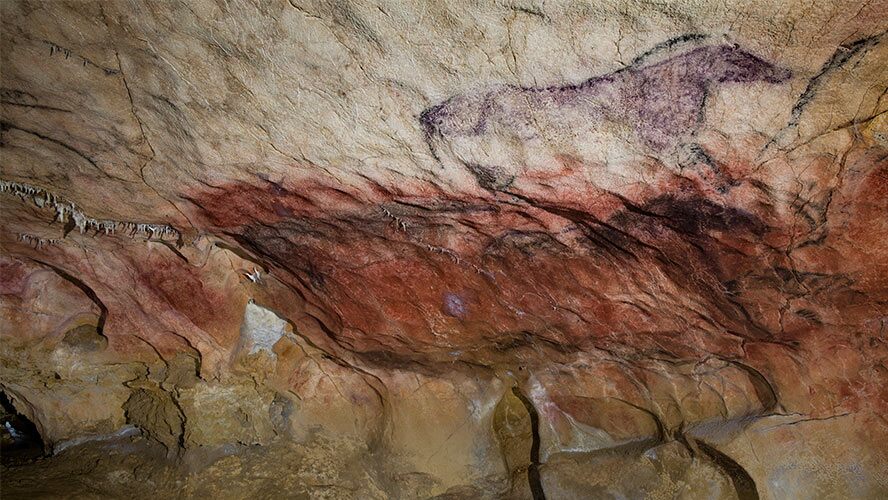
If you go left, you’ll reach the Main Panel with over a hundred representations of animals etched into the walls, including horses, deer, caribou, cows and bison. They were depicted using a variety of colours and shading, such as red, brown, purple and the omnipresent black. Some of the drawings are larger than life, reaching over 2 m long. There are also impressive depictions of a horse’s head sketched in black and two other horses, sketched in purple.
The centre path leads to the back part of the cave, but is not open to visitors. An androgynous human figure was discovered in 2000. Dating methods established it was the oldest representation of rock art in the cave, dating back to 33,000 BC
The Tito Bustillo Cave Art Centre has a permanent exhibition explaining how the cave was found; its geological features; who lived there; and images/reproductions of what the cave art looks like. The exhibition is split into six areas. Admission is not included when purchasing a ticket to visit the cave.




































































